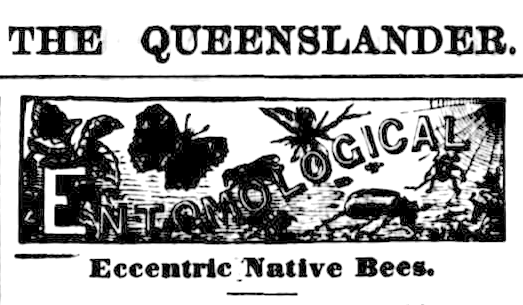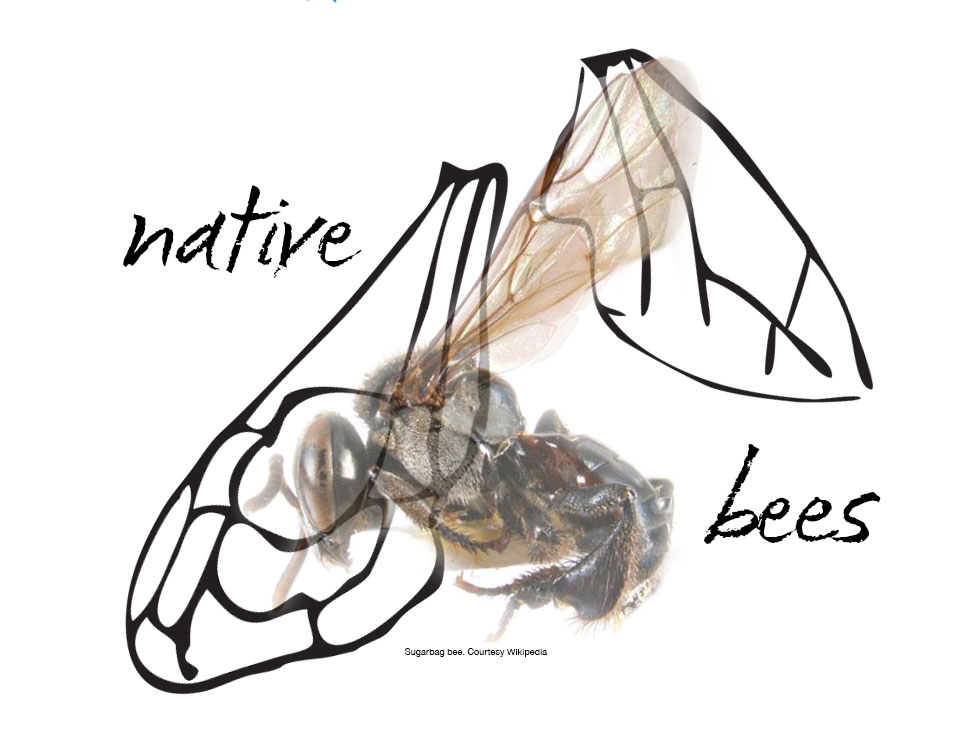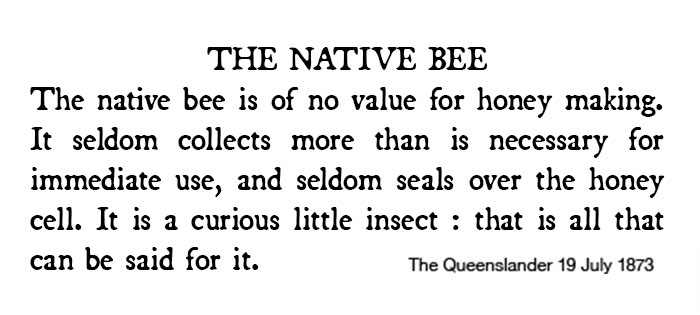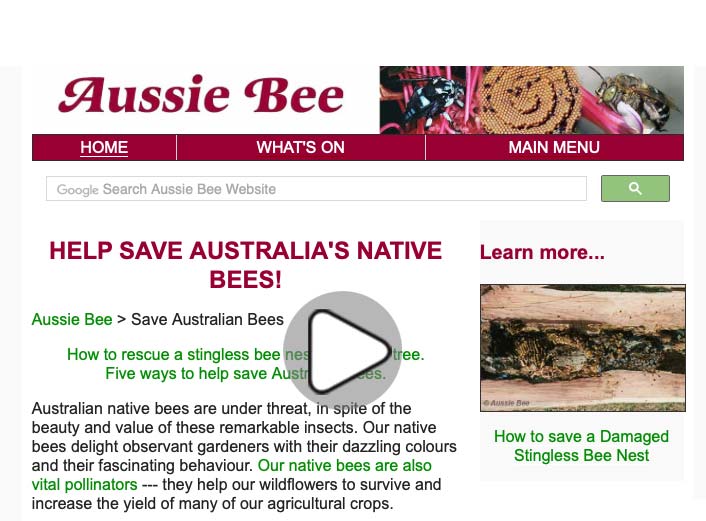
A correspondent, who signs his letter “E.A.,” sends us the following dated from Maryborough:
In September, 1886, I found on the bank of Mistake Creek, four miles from Elgin Downs station (Peak Downs) two swarms or colonies of bees of a kind new to me.
A loud humming drew my attention to a spot on an old disused road; the ground was bare and hard, and a patch about 70ft. long, averaging about 12ft. wide, was perforated over the entire surface with holes about large enough to admit the finger, and about 4in. apart.
Round each hole, was seen the soil excavated in making it, the small quantity indicating that the holes could not be very deep, a few inches at most. The work looked as if quite recently done, but no farther exception appeared to be then going on.
Hovering over the whole patch was, a vast swarm of bees, each, insect being about 7/8in. in length, stout and bulky in proportion. I judged them to be fully twice as large as the ordinary honey bee; the colour a uniform dull light gray, and the body covered with fine spines, like short hairs.
Their movements on the wing were very rapid, darting about so swiftly that they could only be observed in detail when alighting, or on entering or leaving the holes.
These entrances seemed to be common property; numbers of the bees could be seen using the same one. Those entering—or most of them—had lumps of wax or what looked like it, gathered on their legs, while those coming out were unencumbered. Being curious to know what the nests or- storehouses under ground were like I tied up my horse at a safe distance and cautiously approached the edge of the settlement, but having no spade—nothing in fact but a small penknife and a pointed stick—I could make nothing of it.
the holes becoming choked tap before- the end could be reached.
Besides the respect I felt for these giant bees (or for the stings they no doubt possessed I, the prospect of being at any moment attacked by a million or so of them was not attractive enough to induce me to persist long; so far, however, none of them had seemed to take any notice of my presence.
A second colony—much smaller,’ covering a space of about 30ft. by 8ft.—was separated from the larger one by a distance of about twenty yards. About three months later I was again in the same place, but could find no trace of the interesting strangers; there had been heavy rain in the interval, and the creek had probably overflowed there.
But what surprised me most was that the old residents of the district—many of whom I inquired of—seemed to know nothing of any such bees. Mr. Muirhead, of Elgin Downs, told me he had seen them, but knew nothing of their habits.
The others had not even seen them, and during a residence of nearly two years in that district I did not again meet with any. Nor have I during twenty five years in Southern Queensland ever seen or heard of them. I conclude they are only in the North, and are vary rare there.








